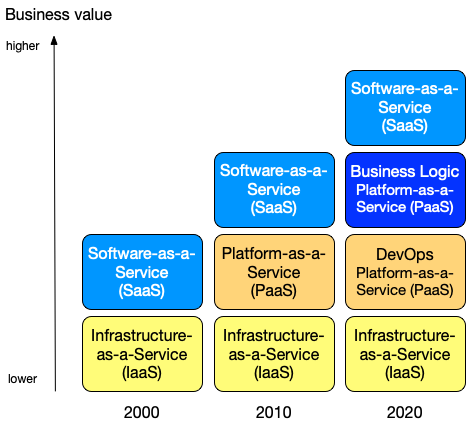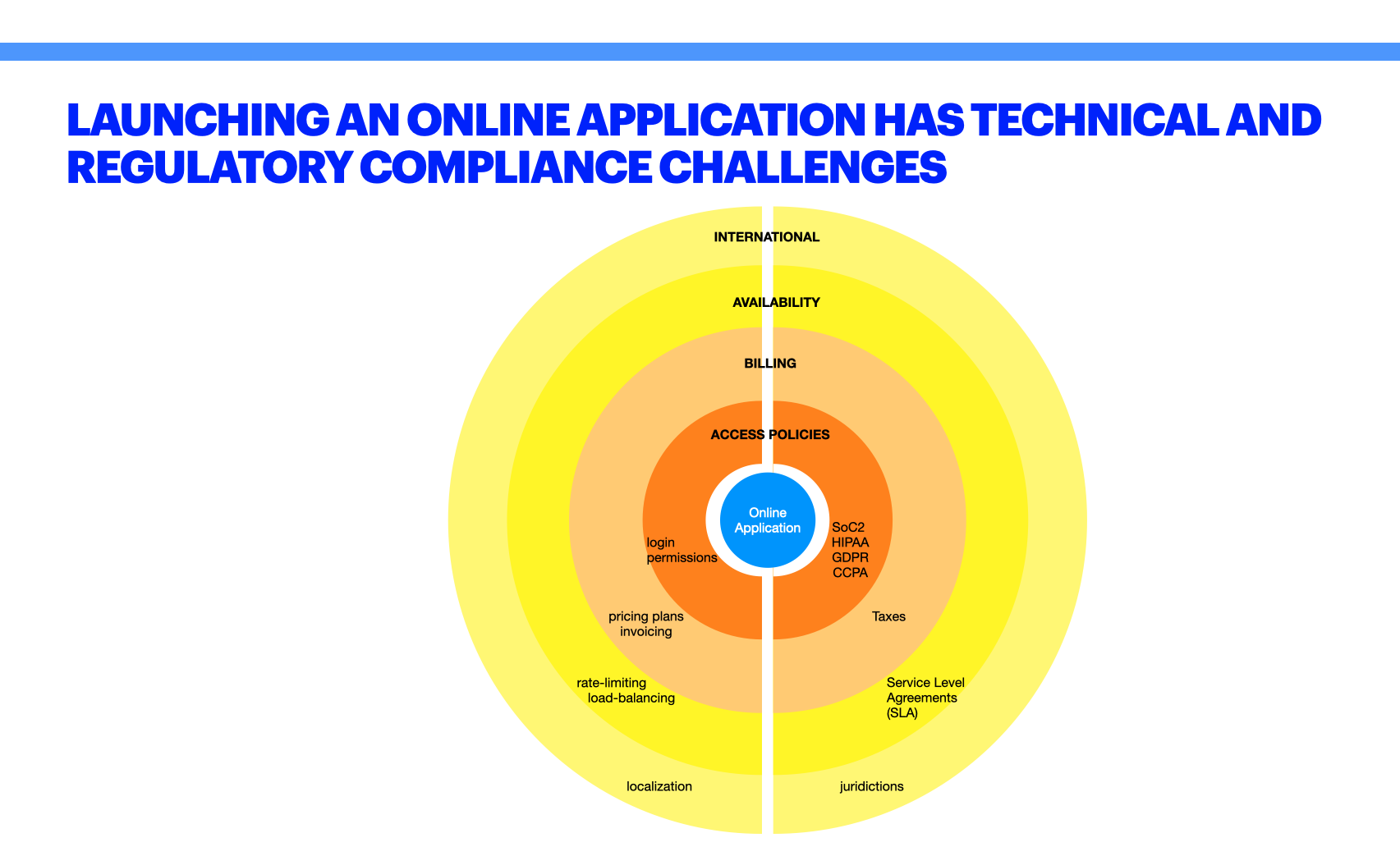The rise of micro-SaaS
by Mark Stansberry on Wed, 2 Jun 2021
 Where there used to be a few large SaaS market, we now see hundred of different
micro-markets and micro-SaaS products to address those micro-markets.
Why is that?
Where there used to be a few large SaaS market, we now see hundred of different
micro-markets and micro-SaaS products to address those micro-markets.
Why is that?
Case study: Disaggregation of the HR SaaS Market
Human Resources Cloud solutions are one of the largest SaaS markets in the United States. On-premises HR Software provided generic products digitizing the system of record of major corporations. The HR SaaS market started when those generic HR solutions were ported to the work over the Internet, making them accessible to more and smaller enterprises. It did not matter if you were a health care company, a high tech startup or a catering company. For the most part, a generic or horizontal HR SaaS solution was a quick, inexpensive option, even if it did not quite match a company’s needs.
This has changed. Today there are several major categories of HR SaaS platforms available: generic basic (or horizontal) HR platforms of course, but also several market-specific (or vertically-oriented) HR platforms such as healthcare HR platforms, contractor-focused HR platforms, corporate international HR platforms, schools, colleges and universities HR platforms, and even Auto Dealership HR platforms.
[If you are founder or product manager in the HR SaaS space, be sure to checkout our list of features every Human Capital Management SaaS will eventually need.]
Looking for more business value
These different HR platforms have emerged because of the different needs of different market segments, different government regulations, different employee monitoring regulations and different benchmarking requirements.
Healthcare HR platforms are steeped in a world of healthcare regulations. As a result, major tasks include monitoring employee training progress, employee healthcare incidents, employee scheduling and all within the framework of different legal, medical, state and country regulations.
As a result an healthcare HR platform often has API connections to certified healthcare learning management platforms, medical knowledge systems and government regulation databases. The metrics to evaluate healthcare departments might include patient incidences per month.
A catering company works with a lot of contractors. Time-sheets are critical. Because of the fluctuation in the workforce, hiring reliable personnel on-demand is also key to such HR platforms.
In a knowledge economy, the need to derive more, better, insights is vital to generate more business value.
More value driven by smaller focused teams
The Internet, search engines and social network applications enable entrepreneurs to reach professional communities faster, anywhere around the World. As a result smaller firms are able to thrive by serving a dedicated micro-market (Ref: The Nature of the Firm: Why Do Firms Exist?).
Today it becomes possible for a hospital to see the median salary for a nurse in their county right on their HR dashboard through anonymous aggregation of customer records by the Cloud provider. The rise of machine learning (ML) algorithms requires at the same time vast amount of data and specialized datasets for the models to be trained on. The trend to aggregate more and more semi-private relevant datasets is only starting.

All SaaS businesses are now building API-first products. Even companies that provide a Web-based product to end-users are hiring front-end (Browser-based code) and back-end (servers) engineering teams, both teams agreeing on an Application Programming Interface (API) to communicate data and actions between the client browser and server. With publicly documented and maintained APIs, it is possible to efficiently connect more data sources together in more ways than ever before.
Long gone is the time where starting a SaaS business required installing a machine on a server rack, installing and maintaining a LAMP (Linux/Apache/MySQL/PHP) stack. Infrastructure-as-Service providers have made it cheaper and easier to get started without owning a physical machine. Platform-as-a-Service providers have made it faster to release code updates to production without the need for sys admins and ops engineers.
SaaS Platform Design
Picking technologies to build a Software-as-a-Service product has as much to do with the wide variety of solutions in the market as the sensibilities of the technical co-founder. None-the-less, all online applications have similar technical and regulatory compliance challenges.

Experienced SaaS operators that have successfully created Cloud solutions for different micro-markets understand that almost all SaaS products, regardless of the end-market, contain a standard set of software building blocks.
How does a SaaS gets operated?
| Technologies | Knowledge required | Regulatory framework | Products in the space | |
|---|---|---|---|---|
| Hosting | DNS, TLS, CDN | Network Security | NIST | GoDaddy, AWS, Fastly |
| Access Control | WAF, Load-balancer, user sessions | Data security | SoC-2, ISO27001 | AWS, Varnish, Kong, DistilNetworks |
| User profiles | IAM, SSO, MFA | Application Security | GDPR, CCPA | Auth0, Firebase, Okta |
| Billing | Cart APIs, Checkout APIs | Credit Card, Accounting | PCI-DSS | Stripe |
| Online Application | Web framework | Industry-specific | Industry-specific | Industry-specific |
You can find more example products of SaaS building blocks in The Vendor Landscape for Enterprise-Ready SaaS and read an analysis of runtime behavior of micro-SaaS products for details.
Outside hosting, the 3 main blocks of features any SaaS cannot do without are:
- Access policies
- User profiles
- Billing
For a team starting a business, or small team whose whole focus must be on delivering business value to customers through the application core logic, it is a problem. Not all teams are lucky enough to find an engineer with knowledge ranging from Network security to Accounting. Even with such talent on your team, having them work on an increasing set of standard SaaS administrative features (single sign-on, billing history, etc.) that are table stake is a waste. Better have your team focused on industry-specific insights and features in the core business logic.
Gartner forecasts cloud application infrastructure services (PaaS) revenue to grow by 83% between 2019 and 2022. That includes both Business Logic and DevOps Platforms-as-a-Service. Platforms come in multiple forms, no-code, low-code, all-code or mixed-code approaches.
Standard building blocks reduce the time required to build a micro-SaaS product, reduce overall maintenance costs, and have time-proven reliability. With a diverse set of standard building blocks, the task of creating a micro-SaaS reduces to that of creating and integrating a minimum number of custom modules, apps, plugins and APIs.
Dobox is a typical use case of embracing modern multi-level design technology. By leveraging DjaoDjin PaaS, Dobox's team has been able to focus on user experience and catch market opportunities by leveraging DjaoDjin PaaS.
More to read
If you are looking for more posts about what it is like to build a micro-SaaS business, you might enjoy Boutique entrepreneur, LLC or Corporation? or Breaking The Curse of Negative Cashflow in SaaS
More business lessons we learned running a SaaS application hosting platform are also available on the DjaoDjin blog. For our fellow engineers, there are in-depth technical posts available.
